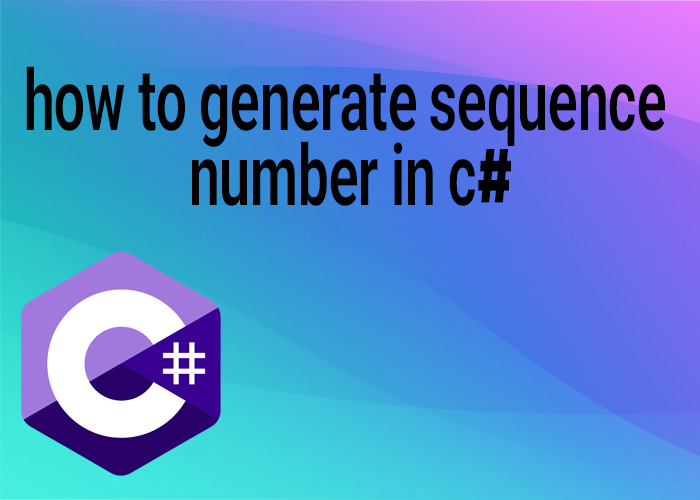Generating Sequence Numbers in C#
In programming, generating sequence numbers is a common requirement for a variety of purposes, such as indexing, unique identifiers, or simply iterating through collections. C# provides multiple ways to generate these sequences, each suited to different scenarios. This article will cover some of the most common methods for generating sequence numbers in C#, from simple loops to more sophisticated techniques.
Using Loops to Generate Sequence Numbers
The most straightforward method to generate a sequence of numbers in C# is by using loops. This method gives you full control over the start point, end point, and the step size of the sequence.
Example: Using a For Loop
using System;
public class Program
{
public static void Main()
{
int start = 1;
int end = 10;
for (int i = start; i <= end; i++)
{
Console.WriteLine(i);
}
// Outputs numbers from 1 to 10
}
}
This example uses a for loop to generate numbers from 1 to 10. It is simple and effective for most needs where a linear sequence is required.
Using Enumerable.Range
For scenarios where you need a quick and easy way to generate a range of integers, the Enumerable.Range method is particularly useful. This method is part of the System.Linq namespace and is great for generating sequences that can be directly used with LINQ queries.
Example: Using Enumerable.Range
using System;
using System.Linq;
public class Program
{
public static void Main()
{
int start = 1; // Start of the sequence
int count = 10; // Number of elements in the sequence
var numbers = Enumerable.Range(start, count);
foreach (var number in numbers)
{
Console.WriteLine(number);
}
// Outputs numbers from 1 to 10
}
}
Enumerable.Range generates a sequence of integers starting from start and containing count elements. It's highly efficient and seamlessly integrates with LINQ operations.
Generating Non-Linear Sequences
In cases where you need a non-linear sequence (e.g., exponential growth, Fibonacci sequence), you may need to implement a custom method.
Example: Generating a Fibonacci Sequence
using System;
using System.Collections.Generic;
public class Program
{
public static IEnumerable<int> Fibonacci(int terms)
{
int a = 0, b = 1, c = 0;
for (int i = 0; i < terms; i++)
{
yield return a;
c = a + b;
a = b;
b = c;
}
}
public static void Main()
{
foreach (var term in Fibonacci(10))
{
Console.WriteLine(term);
}
// Outputs the first 10 terms of the Fibonacci sequence
}
}
This method uses an iterator (yield return) to generate each number in the Fibonacci sequence. It's a powerful feature in C# that allows for stateful generation of sequence numbers.
Conclusion
Generating sequence numbers in C# can be accomplished through a variety of methods, each with its own use cases and benefits. Whether you need a simple linear sequence or a more complex pattern, C# provides the tools necessary to achieve these with minimal code. By understanding these different methods, you can choose the most efficient and appropriate approach based on your specific needs, enhancing both the performance and readability of your applications.





